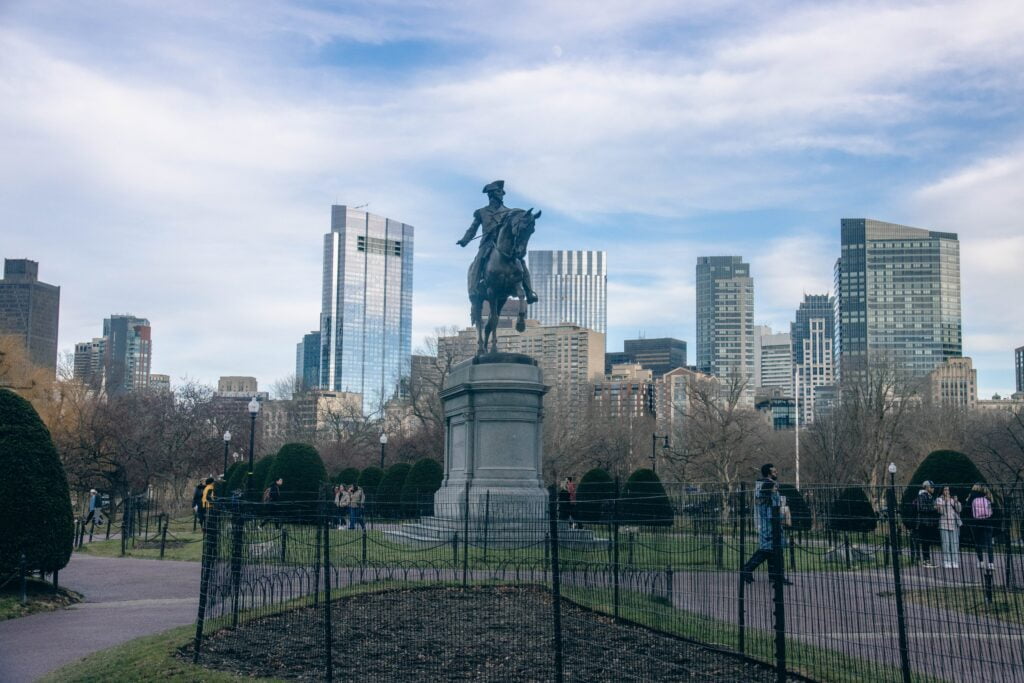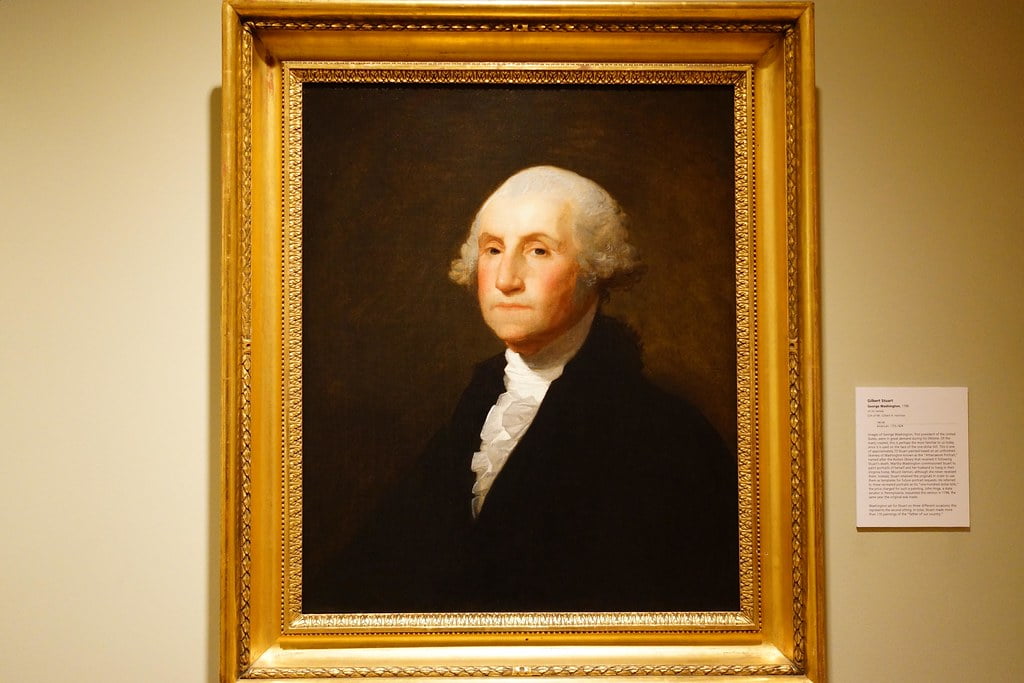When we think of the most iconic figures in American history, one man always rises to the top – George Washington. The fascinating life and legacy of our nation’s first president reveals why he remains so revered over 200 years after his death. Examining some fun facts about George Washington sheds light on his enduring popularity.
George Washington led a remarkable life, both in his public and private affairs, that makes him one of the most intriguing and admired figures in American history. His courageous military leadership helped the colonies break free from British rule. His steady political leadership as president then established crucial precedents that guide our government to this day.
Even Washington’s personal life at Mount Vernon, full of entertaining myths and realities, shows a complex man who struggled with the issues of his time while building an American icon. There are so many captivating sides to Washington that we never run out of intriguing facts to explore about this American legend.
For example, surveys today consistently rank Washington as one of the most admired U.S. presidents. Gallup polling in 2019 showed 74% of Americans viewed Washington favorably – far higher than recent presidents. Clearly, George Washington’s words and image still resonate profoundly with Americans from all backgrounds.
Understanding Washington’s early life and rise to fame during the American Revolution provides insight into how this Virginia plantation owner became the face of the fight for independence. His military valor at battles like Trenton and Princeton, yet also the hardship faced at Valley Forge, forged a resilient leader who put nation above self.
Examining Washington’s precedent-setting presidency also reveals a man focused on creating consensus. Learning about his farewell address gives us his parting wisdom on avoiding political factions. Even the myths surrounding the cherry tree and wooden teeth stories highlight the larger-than-life status Washington achieved.
In exploring just 25 fun facts about George Washington, we capture the highlights of this Founding Father’s life. We gain perspective on his lasting influence over American politics and culture. As we dive in, we build our understanding of how one man played such a pivotal role in the birth of a nation.
Early Life and French & Indian War
Understanding George Washington’s origins provides insight into how this ambitious Virginian grew into the legendary leader of America’s independence. Long before the Revolution, several influences shaped Washington’s early life and set him on the path to fame.
George Washington was born in 1732 to a modest Virginia planter family. His father Augustine owned tobacco farms and slaves along the Potomac River. As a young man, Washington tried various trades like surveying, which taught him the value of land – a skill he leveraged at Mount Vernon.
By 1752, Washington embarked on the military path that defined his early career. He joined the Virginia militia and quickly rose in rank due to his competence. When the French and Indian War erupted, Washington fought alongside British forces against the French and Native Americans.
Although Washington had to surrender at Fort Necessity, he impressed his British superiors with his bravery under fire. They made him an honorary colonel and advisor, giving Washington lessons on commanding large armies. His early battlefield failures also taught him tactical strategies he later applied successfully against the British.
So by his mid-20s, George Washington had built an impressive resume as a surveyor and militia officer. The French and Indian War set him on his trajectory toward revolutionary greatness. Washington’s valuable military experience primed him to take command of the Continental Army when unrest with England erupted.
Washington During the French & Indian War
When fighting broke out in the Ohio Valley in 1754 between French and British colonial forces, Washington eagerly joined the Virginia militia led by Colonel Joshua Fry. As lieutenant colonel, Washington built his first military headquarters, Fort Necessity.
In July of 1754, Washington engaged the French at the Battle of Jumonville Glen, his first combat. Washington’s quick decisions helped the British ambush and defeat the French troops. This small but important skirmish marked Washington’s first military victory.
However, soon after at the Battle of Fort Necessity, poor positioning and rainy conditions led Washington to surrender to the French. Though a loss, Washington gained vital combat experience during the battle. The British were impressed with Washington’s behavior under fire.
This early military service transformed Washington from a backwoods colonist into a distinguished Virginian leader. As we’ll see next, Washington’s command during the French & Indian War prepared him for an even greater challenge – leading the American Revolution.

Commander of Continental Army
When the American Revolution erupted, the Second Continental Congress knew they needed a leader with military experience to head their fighting forces. George Washington was the obvious choice based on his service in the French & Indian War. As commander of the Continental Army, Washington endured immense challenges but ultimately emerged victorious.
In 1775, Washington was appointed commander-in-chief of the newly formed Continental Army. However, Washington lacked resources to train his ragtag militiamen into professional soldiers. Early morale suffered several blows as Washington was outmaneuvered by British forces in New York.
Nevertheless, Washington rebounded with bold actions like his daring night crossing of the Delaware River. This led to decisive victories at the Battles of Trenton and Princeton in late 1776 that revived the weary Continental Army.
The severe winter conditions at Valley Forge in 1777-1778 tested Washington’s leadership. Food and supplies ran dangerously low as Washington struggled to hold his force together. Yet his ability to maintain discipline was crucial to sustaining the revolution.
Slowly, the tide began to turn in favor of the Continentals. Washington’s alliance with the French finally gave his army the military might to beat the British. This led to the pivotal Siege of Yorktown in 1781, where Washington forced the surrender of an entire British army under General Cornwallis.
Washington’s Wartime Challenges
Facing the formidable British forces, George Washington endured immense hardships as Continental Army commander. Early inefficient recruiting left Washington’s untrained militiamen outmatched by British regulars. Losses in New York and Pennsylvania in 1776 left Washington desperate to rebuild troop strength and morale.
At the Battle of Long Island in August 1776, Washington’s positioning errors allowed the British to surround and decimate the Continental force. Washington was painfully outmatched by superior British tactics and firepower. Only a nighttime evacuation across the East River saved Washington’s remaining men from capture.
Despite these defeats, Washington rebounded with daring moves. On Christmas night 1776, he led 2,400 men across icy Delaware River waters to surprise the Hessians at Trenton. This crucial morale-boosting victory renewed waning colonial support for the revolution.
As we’ll explore next, Washington’s resilient leadership during the darkest days of the war was vital in keeping the Continental Army intact. His battlefield tactics and political savvy as commander laid the foundations of victory.
Presidency and Farewell Address
After leading the Continental Army to victory in the Revolutionary War, George Washington was the obvious choice to become the first president. His steady leadership as president established crucial precedents and promoted national unity during a fragile period. Washington even imparted his final wisdom to the nation in his farewell address.
In 1789, Washington was unanimously elected president by the Electoral College. He established the Cabinet system and avoided entangling alliances with his Neutrality Proclamation. His leadership strengthened federal power and quelled rebellions like the Whiskey Rebellion over taxation.
But Washington’s greatest contribution as president may have been stepping down after two terms. This precedent of a two-term limit for presidents then became enshrined in the U.S. Constitution as the 22nd Amendment.
As he left office, Washington penned his renowned Farewell Address to caution against hyper-partisanship. He implored future leaders to avoid alliances that might drag the nation into foreign wars. Washington’s presidency and parting advice established traditions that continue benefiting the nation today.
Washington’s Presidential Legacy
When Washington took office in 1789, his presidency was an experiment with lasting implications for American democracy. As the first U.S. president, Washington confronted the challenge of putting the Constitution’s ideas into practice.
Several of Washington’s actions became hallowed traditions. He established a Cabinet system with positions like Secretary of State to manage executive departments. Understanding the limits of presidential power, Washington worked with Congress to pass legislation like the Judiciary Act of 1789 creating federal courts.
To maintain neutrality from the wars embroiling Europe, Washington issued his 1793 Neutrality Proclamation. This avoided entanglement in foreign conflicts, even at the objection of some in Washington’s own Cabinet like Alexander Hamilton.
Washington stepped down in 1797 after two terms, establishing an unwritten rule that presidents should limit their time in office. This two-term tradition continued until it was formally codified as the 22nd Amendment to the Constitution in 1951.
As we’ll explore next, Washington left one last mark with his Farewell Address that contained pearls of wisdom relevant to this day. His steady hand as the nation’s first president established traditions of American democracy that endured.
Personal Life and Mount Vernon
Beyond his public accomplishments, examining George Washington’s personal life also reveals intriguing insights about his character. His marriage to Martha Custis connected him to Virginia’s upper crust. Managing the Mount Vernon estate provided an escape from public pressures. Even some exaggerated myths about Washington’s life highlight his larger-than-life persona.
In 1759, Washington married Martha Dandridge Custis, a wealthy widow who brought vast landholdings to the union. With Martha’s fortune, Washington expanded Mount Vernon from 2,000 acres into an 8,000 acre plantation.
At Mount Vernon, Washington experimented with innovative farming techniques and oversaw hundreds of slaves. He grew tobacco and hemp while diversifying into milling, distilling, and fishing.
Apocryphal stories, like young George chopping down a cherry tree, captured the public’s imagination about Washington’s integrity. Myths also exaggerate his dental issues, falsely claiming Washington had wooden teeth.
Washington spent his final years quietly at Mount Vernon, enjoying farming and entertaining guests. His death on December 14, 1799 left the young nation bereft of its beloved founding father. America continues benefiting from Washington’s vision over two centuries later.
Myths and Legends About Washington
Given his exalted status in American history, many myths developed about Washington’s personal life and character. These exaggerated stories captured the public’s imagination but often strayed from the truth about Washington.
One of the most famous Washington myths is the cherry tree story. In the tale, a young Washington chops down a cherry tree but then cannot lie when confronted by his father. This story promoted Washington’s image as an honest boy of integrity. In reality, the story first appeared in an early Washington biography likely invented by the author Mason Locke Weems.
False tales also surround Washington’s teeth problems. It’s untrue that Washington had wooden teeth, though he did use dentures with ivory and human teeth to compensate for dental issues. Washington also lost teeth not due to cracking walnuts but more likely from medicines containing mercury.
These legends reveal how Washington became a near mythical figure. As the exalted “Father of His Country,” an idealized Washington representing American virtues took root in the public mindset. The real man was far more human yet still remarkable in his own right.
Conclusion
In reviewing just 25 fun facts about George Washington, we’ve highlighted some of the most defining moments of this American icon’s life. As the nation’s first president and Revolutionary War commander, Washington left an indelible mark on the country he helped create. Two centuries later, his steady leadership at seminal moments continues inspiring generations.
We saw how Washington’s early years as a Virginia planter and British officer during the French & Indian War prepared him for greater responsibility. When the American Revolution erupted, Washington persevered through the conflict’s darkest days to build the Continental Army into a victorious force.
As president, Washington prudently weighed decisions to establish enduring traditions like the two-term limit and a neutral foreign policy stance. His Farewell Address provided sage advice to maintain unity and avoid hyper-partisanship that resonates today.
Even Washington’s personal life at Mount Vernon showed a more human side beneath the mythical legends. His marriage to Martha Custis connected him to Virginia’s elite circles. The embellished stories about the cherry tree and wooden teeth reflected the idolized status Americans conferred to Washington.
George Washington remains one of history’s most admired figures because his life modeled leadership, character, and devotion to republican values. He stepped forward at his nation’s most crucial moments – as revolutionary commander and unifying president. Washington’s steady guidance shepherded America from fragile beginnings into a confident future.
Nearly two and half centuries after his death, Washington’s imprint on our national identity maintains its profound influence. From the dollar bill bearing his face to the capital city bearing his name, Washington’s presence reminds us of the ideals he fought for: independence, freedom, and national unity. By exploring the many captivating facets of his life, we keep alive Washington’s inspiring legacy.
Frequently Asked Questions 25 Fun Facts About George Washington
Knowing more about George Washington’s life provides fascinating insights into America’s first president and Founding Father. This FAQ covers common questions people have about Washington’s early years, military service, presidency, and enduring legacy. Read on to uncover intriguing details about this iconic leader.
Q: What was George Washington’s childhood like?
A: George Washington was born in 1732 in Virginia to a modest planter family. As a young man, he tried different trades like surveying before embarking on a military career in 1752 when he joined the Virginia militia.
Q: What was George Washington’s role in the French & Indian War?
A: Washington fought with British forces in the French & Indian War between 1754-1763. Although he had to surrender at Fort Necessity, Washington impressed his British superiors with his bravery under fire. This built his military experience.
Q: Why was Washington chosen to lead the Continental Army?
A: Based on his service in the French & Indian War, George Washington was the obvious choice when the Second Continental Congress needed a commander with military experience in 1775. His leadership helped the colonies defeat the British.
Q: What precedents did Washington set as the first U.S. president?
A: As the nation’s first president from 1789-1797, Washington established inaugural traditions like the Cabinet system. He also stepped down after two terms, setting the two-term precedent for future presidents.
Q: What is George Washington best known for?
A: As commanding general during the American Revolution and the first U.S. president, George Washington is best known as the “Father of His Country.” He was instrumental in America’s fight for independence and uniting the new nation.
Q: Why is Washington on the one dollar bill?
A: As one of the most admired U.S. presidents, George Washington’s portrait was placed on the one dollar bill in 1869 as a tribute to his central role in American history and identity.
Q: Did Washington really have wooden teeth?
A: No, Washington did not actually have wooden teeth, though he did have dental issues. This is one of the many myths about Washington’s life that emerged after his death.
Q: Where and when did George Washington die?
A: Washington spent his final years at his beloved Mount Vernon estate. He died at Mount Vernon on December 14, 1799 at the age of 67.
Q: Why does Washington remain so revered today?
A: Americans widely admire Washington for his military and political leadership at crucial moments in the nation’s early history. His character and devotion to republican values also contribute to his iconic status.
We hope these answers help shed light on George Washington’s fascinating life story and historical impact. Let us know if you have any other questions!




